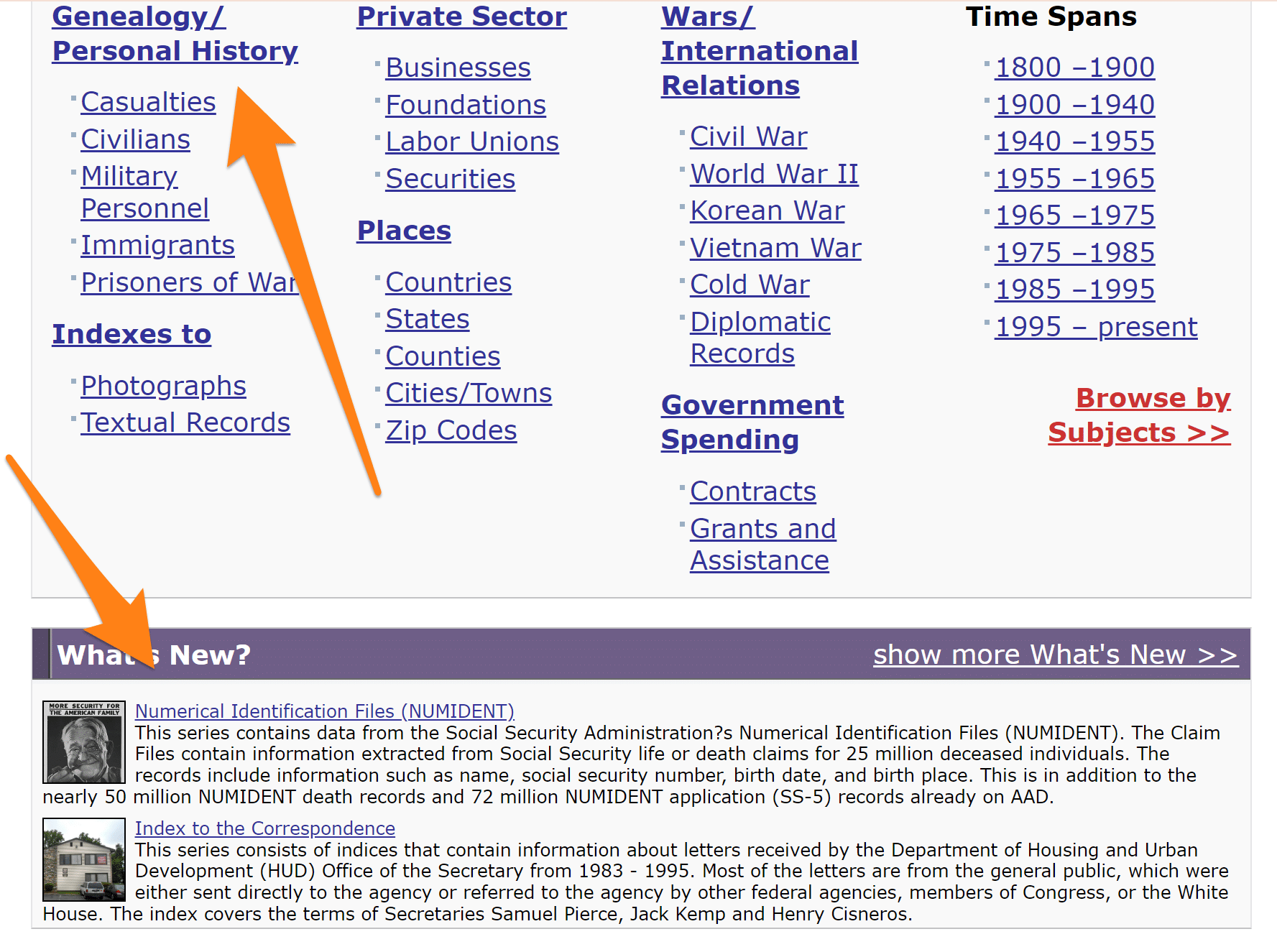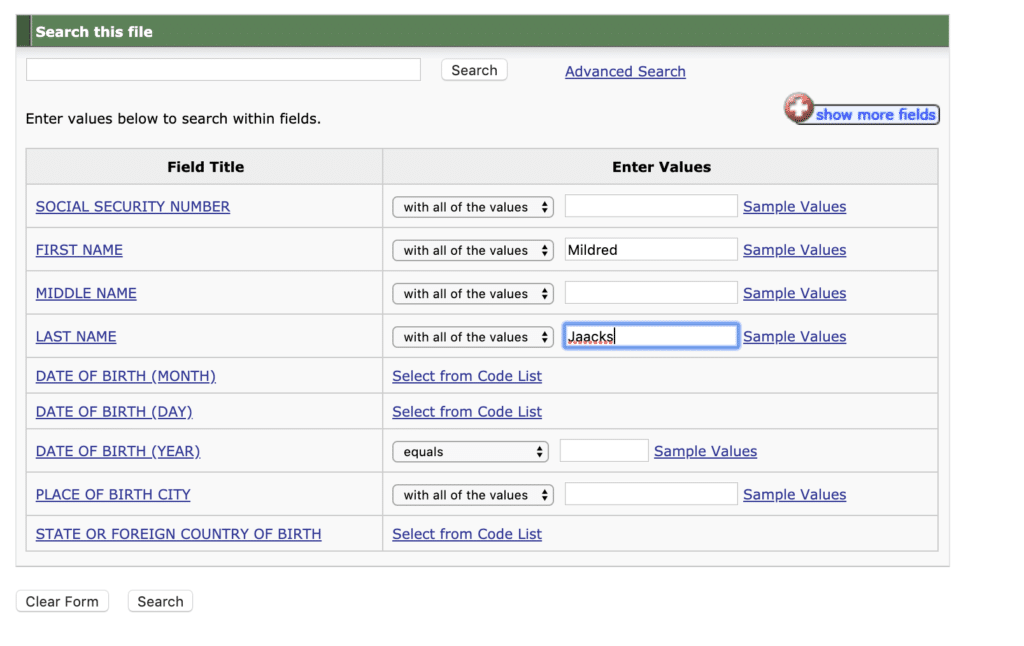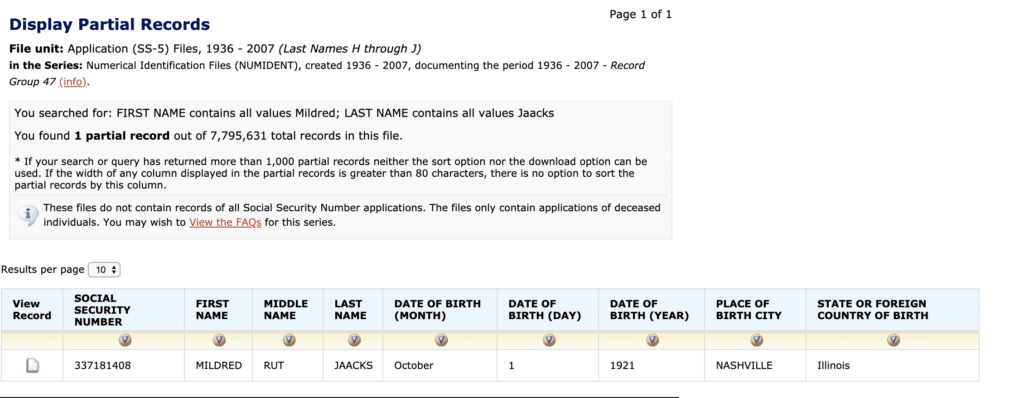Like many older family historians, I began my research at my regional National Archives office. There was something exciting about the whir of the microfilm machines in that dark room and the eureka moment of finding a missing ancestor on a ship manifest.
And, while there is probably a U.S. National Archives center near you, today, you don’t have to travel at all to access many of their records. The National Archives and Records Administration (NARA) offers a rich trove of online documents, known as Access to Archival Databases (AAD), and it’s completely free.
This article is about U.S. National Archives files. For help finding and using archives in other countries see this article or check out our online courses.
Digging Into The National Archives, Access to Archival Databases (AAD)
While the Access to Archival Databases, or AAD, is not a substitute for the vast library available at the regional centers, there are dozens of categories containing millions of records to bolster your family tree.
You will find a variety of United States government records including Social Security application and death records, immigration records from the 19th century, Japanese Americans detained during WWII, certain military death and service records and some unusual databases you may not find elsewhere.
Here’s a Look at Just Some of the Record Types Found in the AAD
You can access all of these records types and more via the AAD homepage or here by subject.
Immigration
Many of the immigration records are transcriptions of the valuable ship manifest indexes – Russians to America, Italians to American, and Germans to America – originally published in book form by the Center for Immigration Research (CIR).
The Famine Irish Data File, also compiled by the CIR, focuses on Irish immigrants who arrived in New York from 1846 to 1851. Individual records list the person’s name, age, country of origin, occupation, destination, and manifest number. You have to look up this number in a separate database to get the name of the ship, port of origin, and arrival date.
Japanese Internment
The Japanese-American Internment Data File documents a dark episode in American history when Japanese-Americans were moved to detention centers during World War II. The database includes each detainee’s name, year of birth, last city of residence before detention, location where detained, birthplace and occupation of parents, occupation, military record, and education.
Military
The most extensive of AAD’s U.S. military records is a file of more than 9 million men who enlisted in the U.S. Army during World War II, as well as special database of Women Soldiers from this time period. You can also check two files of military honors to find out whether your ancestor received a medal for military service.
Several other databases document those who were prisoners of war and those who died in Korea and Vietnam.
Trades and Securities
These last two databases may seem a bit out of place in a genealogy research set.
They are records of certain securities trades from 1972 through 2001, documenting trades by corporate insiders and sales of unregistered securities. What could they possibly have to do with genealogy?
In fact, each record includes the seller’s name and, when applicable, the seller’s role in a company, such as officer or director. If you got a hit, you would learn something about your ancestor’s professional life and at the very least know that he or she was in a position to own stocks at a particular time. There are more than 6 million records.
Women in the Military and Women Business Owners
The National Archives holds some very interesting and unique records in their Women-owned Business Enterprises Databases. Be sure to check this out if your female ancestor owned a business in the 1970s or later.
This is just the tip of the iceberg when it comes to the records available online. Head over to the AAD homepage to start your search or browse here by subject.
Using the Numerical Identification Files Database
One of the most useful places for general research in the AAD is the Numerical Identification Files database (NUMIDENT), which is the Social Security application and death files from 1936 through 2007. Let’s take a closer look at how to use this particular database.
This database contains records of people with verified deaths or who would have been 110 years old in 2007. The application record I searched revealed the person’s date and place of birth, parents’ names, and date she applied for a Social Security number. The death record also gave her date of death and the zip code of her residence when she died (learn more ways to find death records here).
To get started using this collection, go to the National Archives AAD homepage and scroll down to the “Numerical Identification Files” link and follow it. You may also find this collection under the Genealogy section.
The databases are broken into several files alphabetically by last name. Find the appropriate one and click “search” or use the main search to search them all.
This brings up a window where you enter the person’s information. Enter the first and last name, and click “search:”
You’ll now see “Display Partial Records.” If you come across an entry that looks promising, click the document symbol under “View Record.”
This can be a great database to confirm or discover parents’ names, birth dates and locations, death information, citizenship status and more. Make sure to click on the white paper icon at the left for the full record.
The National Archives databases are easy to use and to read, and there are plans to digitize more records in the future. I hope you find them useful in your family history research.
Also Read:
- Absolutely Free Genealogy Research Sites for Every Single U.S. State
- 50 Free Genealogy Sites to Search Today
- The Hugely Valuable Records Many Family Historians Forget About
By Linda Kush. Linda is a freelance writer and genealogist in Boston. Her book, “The Rice Paddy Navy,” began as a family history project. She is gratified that it has helped family historians whose fathers and grandfathers served with her father in China in the U.S. Navy during World War II.
Image at top: Photograph of Workers Unloading Veteran’s Bureau Records. National Archives on Flickr. Check out the entire National Archives photo collection on Flickr here.






Looking for death certificate and burial place of Hiram Roberts, he died in Pittsburg Kansas. Wife, Delilah Amanda Danner. The family moved through Iowa, ohio, kansas.